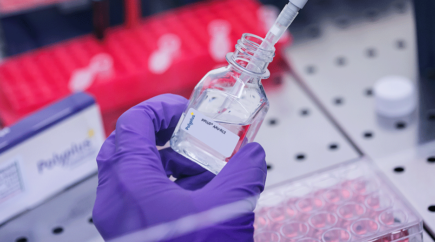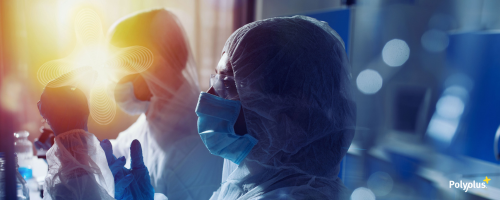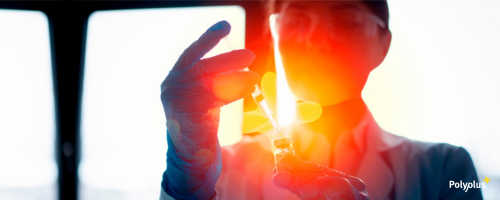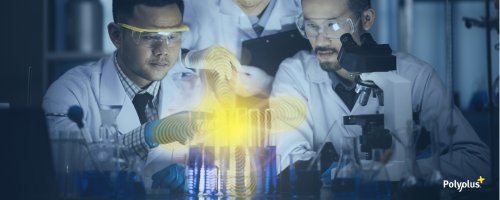pPLUS® AAV-RC range is a set of ready-to-use RepCap plasmids for AAV production of various serotypes through triple transfection. Optimized for use w...

Meet Polyplus at the Monolith Summer Event in Portoroz, Slovenia from 3rd - 7th June 2024. Come meet our team of experts and listen to our talks and poster presentation during this event.
 |
Marine Guise, R&D Bioproduction Scientist, Polyplus |
Talk Summary : Adeno-associated virus (AAV) vectors have emerged as the most effective delivery vector for gene therapy due to their efficiency to target different organs using specific serotypes and their low immunogenicity. During the AAV production process, many steps (incl USP/DSP) require process optimization and provide opportunities for innovative solutions to optimize yields for process economics. Those optimizations must be scalable from small to large scale to reach higher titers and higher viral particle quality (full viral particle). Thus, over the past few decades, extensive efforts to optimize AAV vector production processes have been made. However, further optimizations are still needed to increase production rate and vector yield in a minimal cell culture volume. Among all raw materials and transfection conditions, we show that the transfection reagent, cell line, plasmid design and plasmid ratio can drastically impact the quality of AAV vector. Also process parameters such as pH, temperature and gazing strategies are important and can be game changer on the road to high titers. This presentation will review our technological advancements, to improve AAV productivity and quality, and to propose novel strategies to build upon this research.
 |
Guillaume Freund, Process Technology Manager, Polyplus
|
Talk Summary : Lipid nanoparticles (LNP) have demonstrated high efficiency delivering RNA therapeutics in vivo. However, the properties of such nanoparticles obtained with conventional ionizable lipids are often hard to modulate; particularly their biodistribution profile. As a result, ionizable LNPs often predominantly end up targeting the liver. One of the current challenges in the field consists of adjusting the particle chemical composition to the targeted application. One of the current challenges in the field consists of adjusting the chemical composition of the LNPs to the intended application. Here, we characterized a library of 10 innovative imidazolium-based cationic lipids as key component of cationic LNP (cLNP). We disclose their chemical structures and demonstrate their efficacy in generating LNPs through characterization of their hydrodynamic diameters, Zeta potentials, and mRNA encapsulation efficiencies. The resulting particles display high transfection efficiencies and have little to no impact on cell viability in vitro, on HEK293 and CaCo-2 cell lines. In vivo, the biodistribution of the cLNP highly depends on the cationic lipid chemical structures, targeting mainly lungs and spleen. Among this library, we have also identified one cationic lipid as a potent additive in Moderna‘s Spikevax formulation for extrahepatic biodistribution.
Lipid nanoparticles (LNP) have demonstrated high efficiency delivering RNA therapeutics in vivo. However, the properties of such nanoparticles obtained with conventional ionizable lipids are often hard to modulate, and especially their biodistribution profile. Such ionizable lipid-based nanoparticles often predominantly end up targeting the liver. One of the current challenges in the field consists of adjusting the particle chemical composition to the targeted application. Here, we have characterized a library of 10 innovative imidazolium-based cationic lipids as key component of cationic LNPs (cLNP). We disclose their chemical structures and demonstrate their efficacy generating LNPs through characterization of their hydrodynamic diameters, Zeta potentials and encapsulation efficiencies. The resulting particles display high transfection efficiencies and have little to no impact on cell viability in vitro, on HEK293 and CaCo-2 cell lines. In vivo, the biodistribution of the cLNP highly depends on the cationic lipid chemical structures, targeting mainly lungs and spleen. Among this library, we have identified one cationic lipid as a potent additive in Moderna‘s Spikevax formulation.
Harnessing rAAVs as viral vectors for therapeutic transgene delivery still requires improvements in yields and specificity to lower vector doses, and therefore manufacturing cost, as well as to improve patient safety. To this end, our research is focused on developing novel technologies to ensure manufacturing of high yielding rAAV particles using transient transfection, as well as enhancing features of rAAV vectors that act on the overall size of packaged material and specificity of delivery. Here we present our state-of-the art approach to design new helper plasmids (phelpers) with the aim of improving both the infectiosity (TU/mL) and the quality (full | empty ratio) of the viral particle obtained from suspension cultures. We took the opportunity to exploit our proprietary DNA assembly method technology to explore the synergies of multiple genetic features modularly assembled in synthetic plasmids. Comparison of the biological activity of several versions of rationally designed pHelpers led us to identify the optimal configuration able to outperform existing helper plasmids in every tested bioproduction conditions. Our expertise in DNA plasmid design and assembly together with our scalable transfection solutions for rAAV manufacturing gives us the potential to improve both productivity and specificity of gene therapy products.

Success of Gene and Cell Therapies is dependent on efficient production of viral vectors that require optimized transfection reagents and viral vector engineering

RNA/DNA in vivo delivery is the most powerful alternative to viral vectors for nucleic acid-based therapies. They offer substantial advantages in terms of reliability,safety and costs for nucleic-acid based therapies

Broad range of solutions is needed for manufacturing of functional proteins or antibodies at the desired scale in bacteria, yeast and mammalian cell expression systems

Optimised plasmid engineering and specific transfection reagents are key to enable protein expression in a wide range of adherent and suspension mammalian cell types